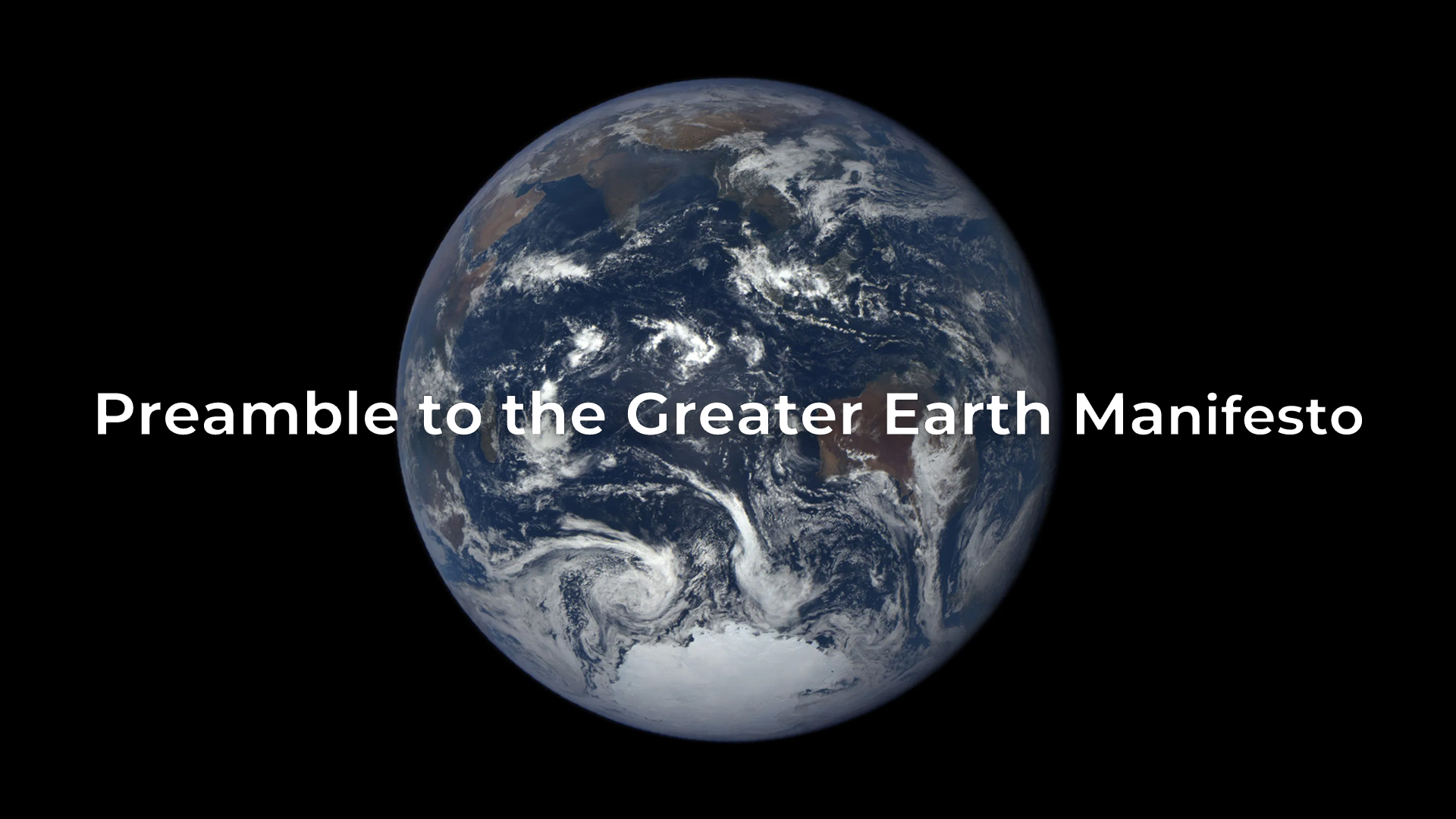
Preamble to the Greater Earth Manifesto
Arthur Woods
The Greater Earth Manifesto
Concepts for a New Humanistic Vision of Our Planet
Since the beginning of human history the perception of its home planet Earth has always influenced the way humanity has formulated its beliefs and conducted its affairs. When Earth was perceived of as the entire universe it gave rise to myths and religions that permeate and influence society into the present time. Recently, space exploration has provided humanity a perception of the “Whole Earth” a blue sphere floating in the vast expanses of the cosmos. This perception has catalyzed the globalization of its cultures and defines many of its present activities.
Earth has always been the provider of raw materials and the mother and nourisher of Life. When humans were few Earth itself was the frontier to be discovered and explored. As exploration gave way to exploitation, the human species successfully established its dominance over the rest of Nature and has occupied the planet as no other species before it. It has devised means to extract and utilize resources to feed its populous and to power its development. It has occupied the lands, farmed the vast oceans and traversed the skies in its quest for perpetual progress and development.
Today, most people live with a perception of planet Earth that is defined by the edges of its atmosphere. This perception is both outdated and constraining.
In the mid twentieth century humans began to investigate ways to penetrate the atmosphere. Today a communications apparatus installed beyond the atmosphere permits humans to remain in constant touch with each other from any place on the planet. Orbital outposts are providing the information to enable human beings to adapt to this new environment. Scientific instruments placed in this area are exploring the depths of the cosmos and investigating the state of the environment below. In a short time these activities have effectively expanded the territory of planet Earth from its solid dimensions of 12,756 kilometers to a diameter of 84,328 kilometers.
As the twenty-first century begins, humanity finds that it needs more room and more resources to sustain its numbers and to maintain its thirst for development. The resources that contributed to its present state are being irrevocably deplenished to unsustainable levels and their uncontrolled use within the biosphere is resulting in severe ecological consequences. As it is unsure and unequipped to occupy and transform a neighboring planet to meet its needs, humanity’s next logical step will be to discover and inhabit the last reaches of its own planet – to expand its activities to Earth’s true boundaries as defined by the physical laws of the universe. As it has throughout its history, humanity must understand and seek nourishment from its home planet and it must now once again refine its perception of the planet in order to recognize and embrace the perception of a greater, richer more sustainable Earth.
All celestial bodies of significant concentrated mass exert a field of gravity around their cores which extends to the point of tangential intersection with other celestial bodies. Earth’s gravitational field extends 1.5 million kilometers from its center where it meets the gravitational influence of the Sun. This sphere has 13 million times the volume of the physical Earth and through it, passes some 55,000 times the amount of solar power which is available on the surface. Within this sphere of 3 million kilometers are enormous amounts of other resources, including the Moon and occasional passing asteroids. Like the territorial waters surrounding nations – these resources belong to our planet and should be used for the ultimate benefit of all Life which has originated there.
This is Greater Earth. To survive and to prosper the next step for our species is to exercise its fullest capabilities to occupy and enjoy this new territory.
